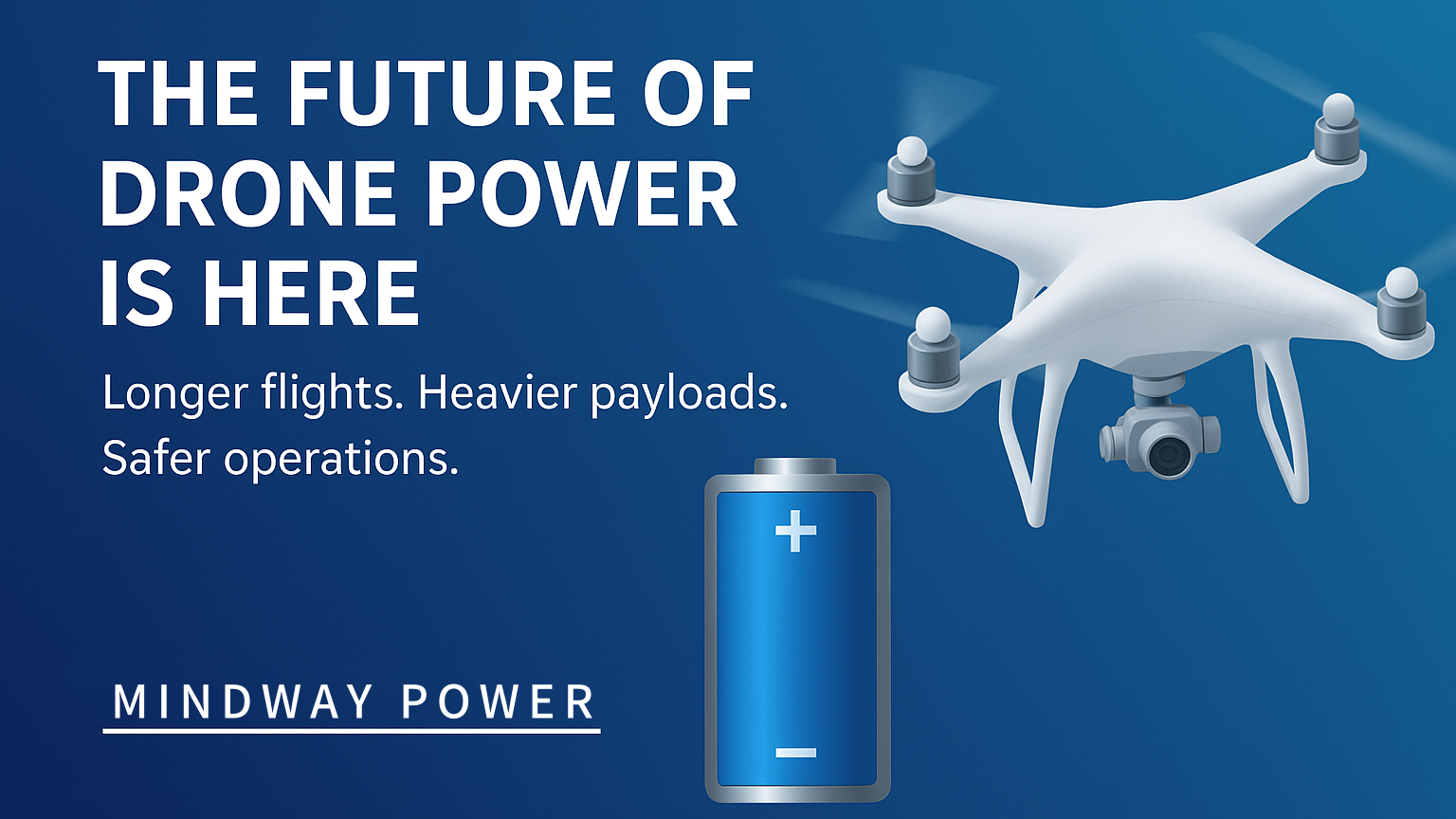The Power Battery Revolution: How High-Energy-Density Batteries Are Reshaping the Future of Drones

From Core Technology to Industry Transformation
1. Standard Batteries vs. High-Energy-Density Batteries: A Leap in Power Storage
The fundamental difference lies in how much energy can be stored per unit weight or volume.
Compared to conventional lithium-ion batteries، high-energy-density batteries store significantly more energy، enabling longer flight times and greater payload capacity for drones.
Key distinctions:
، Materials Innovation: Moving from graphite anodes and common cathode materials to advanced options like silicon-based anodes، high-nickel cathodes، or even solid-state electrolytes.
، Structural Improvements: Transitioning from traditional wound designs to stacked electrode structures، thinner current collectors، and advanced integration technologies such as Cell-to-Pack (CTP) for higher space utilization.
High-energy-density batteries act like a "compact powerhouse، " offering dramatically improved performance، but with greater technical challenges in design and manufacturing.
2. Breaking the Energy Density Barrier: Technology Paths and Cost Balancing
Achieving high energy density requires advancements in materials، manufacturing processes، and system-level design—each step introducing complexity and higher costs.
Material Innovations
، Cathode materials: High-nickel chemistries increase capacity but require advanced coating and stabilization technologies.
، Anode materials: Silicon-carbon blends offer much higher theoretical capacity، though they require engineering solutions to manage volume expansion and ensure durability.
، Electrolytes: Semi-solid and solid-state electrolytes promise improved compatibility with next-generation anodes but face challenges in cycle life and interface stability.
Manufacturing Precision
، Ultra-thin electrode coatings demand micron-level precision in production lines.
، Dry electrode processes can reduce environmental impact، but achieving high yields remains a hurdle.
System-Level Optimization
، Intelligent thermal management systems improve temperature consistency and safety.
، Lightweight structural designs reduce overall mass، allowing for more battery or payload capacity.
The trade-off: every gain in energy density must be weighed against cost increases، mitigated only through large-scale production and continued R&D.
3. Why High-Energy-Density Batteries Are Essential for Drones
In the UAV industry، battery energy density directly impacts competitiveness:
1. Extended Flight Time: Longer endurance enables more efficient aerial mapping، surveying، and delivery missions.
2. Increased Payload: Lower battery weight allows drones to carry more advanced sensors، cameras، or cargo.
3. Harsh Environment Reliability: Advanced chemistries maintain stable performance even in low-temperature or high-altitude conditions.
4. Enhanced Safety: Modern safety designs—such as improved separators and pressure relief systems—help meet strict aviation safety standards.
High-energy-density batteries are increasingly becoming a baseline requirement for professional and industrial drones.
Conclusion: The Ongoing Race Toward Higher Energy Density
From consumer electronics to aerospace applications، each breakthrough in energy storage reshapes industry boundaries. As battery technology continues to evolve، drones will see longer flight times، greater operational flexibility، and expanded application potential—pushing the limits of what is possible in unmanned aviation.
Mindway – Powering the Future of Flight
Mindway provides high-energy-density batteries for drones and other advanced applications.
Email: market@mindwaytech. cn
Website: www. mindwaypower. com


